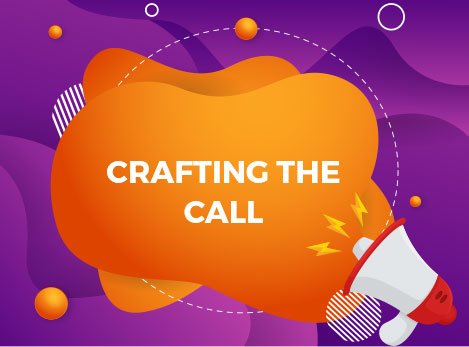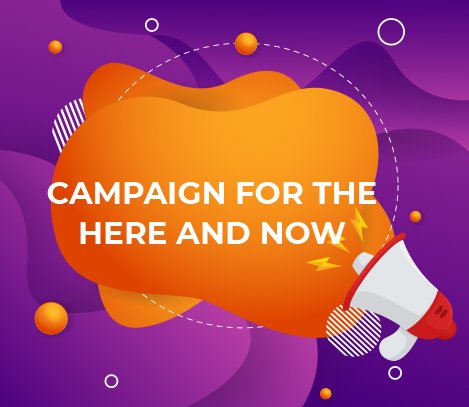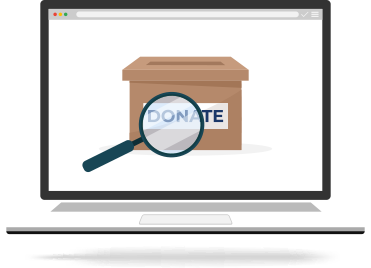The Definitive Guide to Online Fundraising
Position Your Nonprofit for Success
What is Online Fundraising?

Online fundraising or virtual fundraising is a way for mission driven organizations to raise money via the internet. A growing source of funding for nonprofits, online fundraising has helped increase accessibility, reach, and donation volume through strategies like mobile giving, automated recurring donations, peer-to-peer fundraising, and more.
Effective online fundraising can be broken down into three key components:
If you have compelling, clear, and timely communications that you tell through creative storytelling, you can create strong and sustaining relationships with your supporters. By leveraging data, technology, and other tools to optimize your efforts, you have the ingredients to nonprofit fundraising success!
Storytelling
Why is storytelling the first key to fundraising success? Because a good narrative is what compels your supporters to stay engaged and to keep taking action. Within your suite of communications with your community, whether digital, print, or face-to-face, a good story will resonate enough to inspire people to tweet, donate, advocate, and show up in person.
Crafting the Call
While the logistical components of a challenge may be what drives your nonprofit’s operations, the human element is what drives your donors to support it. It’s your job to show donors how they are contributing to change, and the right appeal will give all the credit for solving the problem to the donor.
Try building a narrative for your fundraising campaign with these elements:
- Present a vision of what could be (ideal situation/solution)
- Reveal the enemy that’s stopping that vision of becoming a reality (challenge)
- Find a hero to solve the problem (your donors)
- Show impact for the recipient (who or what is being helped)


Campaign for the Here and Now
Many nonprofits are working toward monumental, world-shifting goals that will take years or decades to achieve. But when it comes to fundraising, you want to focus on the present moment. The goal is to create specific, time-bound fundraising campaigns that show incremental impact toward a larger goal.
Some questions to ponder:
- Is there an opportunity to create a specific, focused campaign that ties to relevant current events or crises? (i.e. emergency appeals, legislative policy and advocacy)
- Is your team ready to pivot and jump on breaking news that might impact your organization or the mission you support?
- Are there partners and peer orgs you can collaborate with on a timely, specific fundraising appeal?
- Can you illustrate impact at specific giving levels and show the results soon after?
To learn more
download our full guide hereRelationships
It’s not just a field of dreams that requires a little trust, a little creativity, and a lot of hard work. Building a community of supporters for your nonprofit is all about going the distance. But you have to start somewhere — you can’t just expect that people will show up, without cultivating a connection with them, just as you would when meeting new people in real life.

If you build it, will they come?
You may have heard of either a “commitment curve” or “ladder of engagement” — both terms symbolize the path your supporters will take as they invest more into your cause. It may start with a tweet, then lead to signing up for email newsletters, climb to a one-time donation, jump to a sustaining donation plan, and soar to volunteering, board memberships, or major gifts.
You have to start somewhere, and donor acquisition truly starts at the foot of the ladder. Here are some levels of engagement to consider:
Get Social
Connect to your supporters through social media posts and hashtags. Get the conversation going online!
Amplify Your Message
Thanks to ever-evolving media, technology, and a little creativity, there is no shortage of ways for nonprofits to promote themselves. Be current and join the conversation on the platforms or mediums where people are talking about your issue.
Ask for a Little “a” Advocacy
Ask people to sign a pledge in support of a particular issue. Provide a checklist or toolkit to encourage people to take steps on their own or in their communities in support of a cause.
Engaging at Events
Asking people to show up in person can be a tricky way to grow your community. Often, it’s way up on that commitment curve, perhaps higher than donations. But it could be an easy way to gain some new supporters and make them some of your most active members right off the bat!
Build with a Big “A” Advocacy
While little “a” advocacy is declaring that you believe in access to healthcare or that you support the humanities, big “A” advocacy is calling your senator or sending a targeted email asking them to pass a bill or to appropriate funds. Encourage your supporters to take the next step.
To learn more
download our full guide hereMembership Value
In an ideal world, people donate to and support causes purely out of the goodness of their heart and don’t expect anything in return. But realistically, when we choose to invest in a cause we care about, we do expect something in return, even if it just starts with a simple thank you note. Depending on how much someone gives to a cause, it’s only natural that they receive a bigger return on investment.

Here are a few ways that you can provide value to your donors/members as they move up that ladder of engagement, and keep them coming back for more:
- Offer exclusive content and opportunities
- Show their stories & highlight their involvement
- Provide them regular updates and information regarding your cause
- Offer a reward for achieving a certain milestone of support
- Show them the future and use data to share how far their support will go
- Wine and dine your top donors at a gala
- Give an inside look at operations and let them meet the staff
- And a scary but important one: ask them what they want while managing expectations
Personalizing Donor Communications
You’d never ask a brand new donor to make the same pledge as a board member. Make sure your communication is specific and personal, especially when it comes to fundraising asks.
Here are some different stakeholders to consider. You can download our full guide for some fundraising and communications strategies, tactics, and tips to consider for each of these groups.
Grassroots Supporters
These folks are your biggest group of supporters and, while they may not make huge gifts, they make more gifts throughout the year and are essential to spreading your mission and message to their networks. They tweet and post on Facebook. They forward emails. They give a small donation for every campaign. They show up at events. And they even participate in peer-to-peer fundraising.
Partners and Ambassadors
Working with partners and ambassadors can reap great rewards for your nonprofit. A single tweet from a big name can garner thousands of dollars in a matter of hours. But partners and ambassadors need clear expectations and guidelines, too. Many nonprofits draft an MOU (Memorandum of Understanding) that outlines what exactly they will provide to you and what you will provide to them.
Major Donors
This stakeholder group thinks big — they want big solutions for big problems, and they’re willing to back it up financially. Major donors may make a large gift or even cover an entire campaign. For investments this big, the relationship and communications need to be even stronger. Donor managers should be frequently in touch with updates and information.
Board Members
If anyone really has a say in what happens with your organization, it’s often your board. The board can make decisions about your budget, your operations, your leadership and staff, and ultimately, how and what you support. That means the board probably has the most information about your daily ins and outs than anyone else — but they also may only really dig in a few times a year for meetings. So it’s key to keep them engaged throughout the year.
Expressing Gratitude
Nonprofits need to say thank you to their donors, and they need to do it right away. Not weeks later, or months later. Otherwise, you risk offending your donors, or worse, confusing them because they may think their gift did not process.
The rule of thumb we follow is to communicate with a donor the way they have chosen to communicate with you. If a donor mails you a donation, mail them a thank you. Was the gift online? Communicate with them where they are. However you send your acknowledgement, here are some recommendations:
- 1Grab their attention. Reinspire, don’t be boring!
- 2Be personal— at minimum, use their name.
- 3Be specific and share impact.
- 4Say thank you more than once.
- 5Keep it short and sweet.
- 6Do not include another ask.
Optimization

Everything we’ve talked about so far can be changed, and improved upon. Every strategy and tactic you try should be tested, analyzed, and — the third key to fundraising success — optimized. You should be testing everything from gift amounts and giving levels, to donate button colors and placement, and wording in your appeals. The more you can drill down into who your donors are and what they are doing, the better you’ll be able to make the right ask to the right person at the right time.
Asking the Questions
While nonprofits aren’t businesses, the numbers do matter, and fundraisers and communicators need data to back up the way we operate, show value, and illustrate impact. But what exactly is our data telling us? And how can you use data to tell the story of your organization? To answer these larger questions, we start with: Who? What? When? Where? Why? How?

- Who are your donors?
- What are they interested in supporting?
- Where is your audience engaging with you (ie offline or virtually)?
- When are your donors giving and taking action?
- Why do they give?
- How are your supporters donating (ie by mobile giving or check)?
To dive into each of these questions in detail
download our full guide hereCan Artificial Intelligence Improve Your Nonprofit’s Fundraising?
There are major efforts leveraging AI to do amazing things from curing rare cancers to stopping poachers to monitoring human-trafficking patterns. But what does AI mean for small or medium nonprofits? How can AI be used to target the right donors and provide data to back up your storytelling and strategy? Turns out AI can help your fundraising efforts by:
- Predicting Action & Giving
- Creating Personalized Donor Journeys
- Cultivating More Donors
To learn more
download our full guide hereWhat’s Next? Create a Strategic Fundraising Plan
Now that we’ve taken a look at three key elements to a successful fundraising strategy, it’s time to put it into practice. The storytelling, relationships, and optimization should all play together in a strategic plan. Here’s what you should be thinking about when you create your plan:
SMART goals
Strategic, Measurable, Achievable, Relevant, and Time-bound → Don’t set arbitrary fundraising goals. Set goals that your team can work toward with the resources they have, and that your donors can help you achieve.
Resources
Do an inventory of your resources and tools, externally and internally → Do you have the right technology, staff, partners, vendors, and data?
Trends and Best Practices
What’s working in the world of nonprofit fundraising? → Do your homework, and read the reports, the guides, the case studies. File away examples from peer organizations of campaigns, emails, or appeals that you liked and didn’t.
Discover More
We’ve covered a lot, but in some ways we’ve only just scratched the surface of online fundraising for your nonprofit. Luckily, we created this free 30-page guide that dives into more detail on all the above information, and covers some ideas we didn’t even touch on here!
Download our FREE 30 page guide here.

